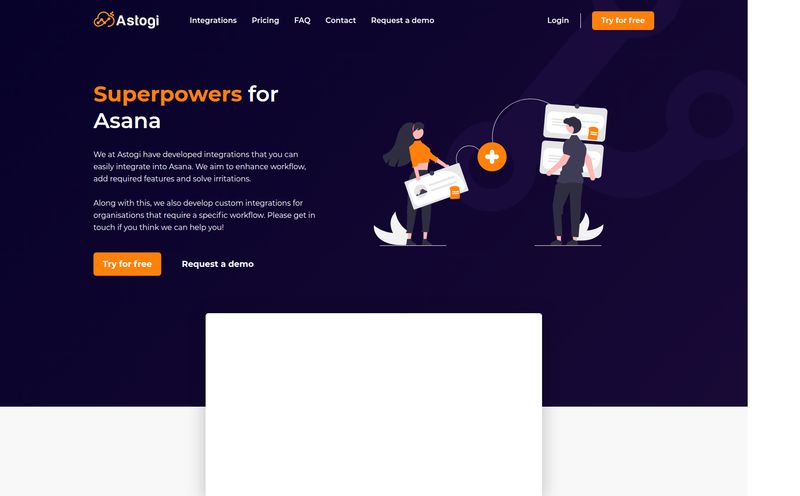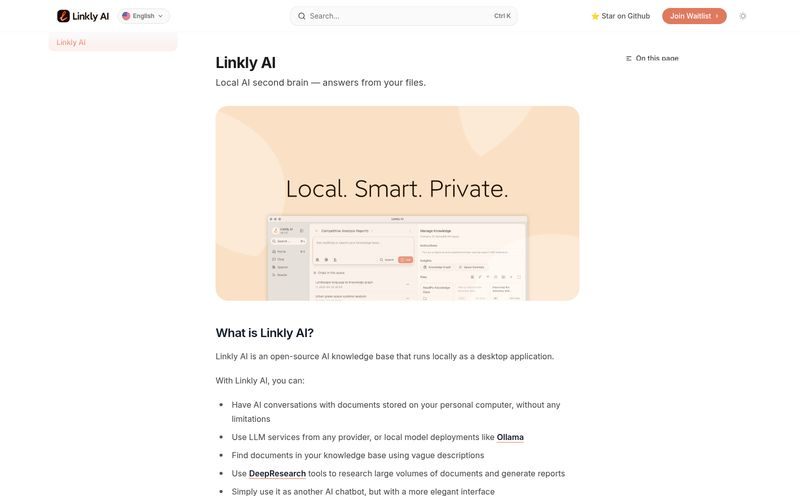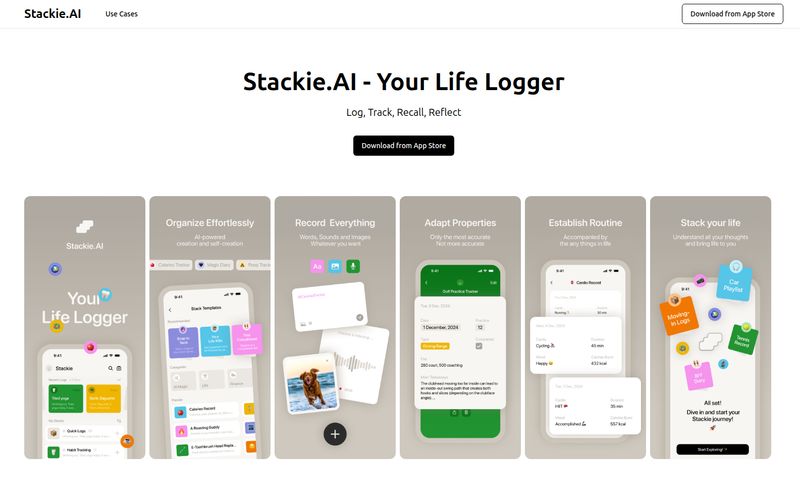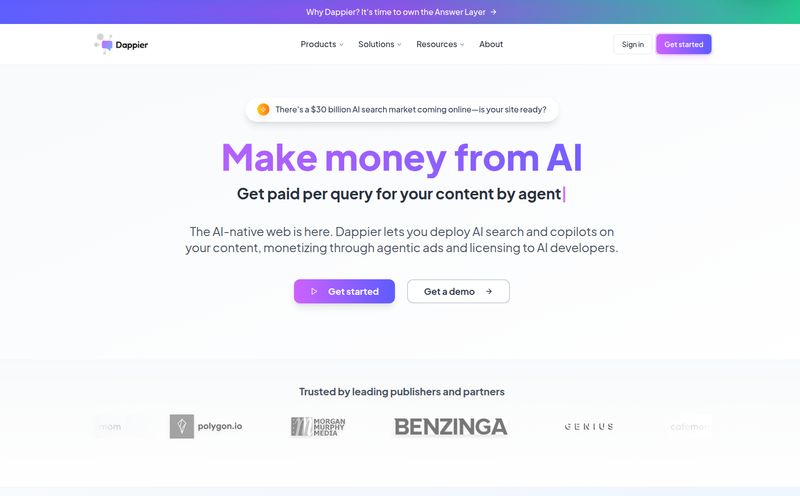The AI hype train is moving at a thousand miles an hour, and every other email in my inbox is promising to revolutionize my business with some new GPT-powered widget. It’s a lot. Most of them are just shiny wrappers on the same old tech. But every now and then, something pops up that makes me lean in a little closer. That's what happened when I stumbled upon Arivix.
The promise is simple and, I'll admit, pretty compelling: Your Data, Your AI, Your Way. Instead of a generic chatbot that knows a little about everything, Arivix claims to help you build an AI agent that knows a lot about one thing: your organization. It’s like hiring a genius new employee and on their first day, they've already read every document, every webpage, and every database your company has ever created. A pretty powerful idea, right? But does it hold up? Let's get into it.
So, What Exactly is Arivix?
Stripping away the marketing jargon, Arivix is a SaaS platform designed to let you create your own AI-powered chatbots and agents. The big differentiator here is the focus on using your own, specific data as the foundation. Think about all that internal knowledge you have locked away in Google Docs, Notion pages, PDFs, and random databases. Arivix is built to connect to those sources and create a secure, intelligent knowledge base. This becomes the 'brain' of your AI agent, ready to answer questions, provide support, and offer insights with information nobody outside your company has.
It’s a move away from the one-size-fits-all approach and towards something genuinely tailored. And for anyone who's spent hours trying to 'train' a generic bot to stop making stuff up about their return policy, this is a breath of fresh air.
The Arivix Experience: A Step-by-Step Walkthrough
The landing page lays out a pretty straightforward process. It doesn't seem like you need a PhD in machine learning to get started, which is always a plus in my book. Here’s how it seems to break down.
Creating Your Knowledge Base
First things first, you have to build the brain. This is the part where you feed the machine. Arivix calls this the “Intelligent Knowledge Base.” You start by creating a container for all your information, which they emphasize is secure and private. This is probably teh most critical step; garbage in, garbage out, as they say. The quality of your AI will directly depend on the quality of the data you give it.
Connecting Your Data Sources
Once you have your knowledge base ready, you start plugging things in. The platform shows options for connecting files, web links, and databases. This flexibility is nice. You can point it to a public FAQ page, upload internal training manuals, or even hook it up to a product database. This multi-source capability is where a lot of the magic happens, creating a more well-rounded understanding for your AI.
Designing the Chat Interface
This is the fun part. How will people actually talk to your AI? Arivix gives you options. You can use pre-built interface styles to get up and running quickly, or you can get your hands dirty and create a custom solution. For most businesses, a clean, pre-built chat widget that you can embed on your site is probably enough. But for SaaS companies or anyone wanting to integrate the chat experience directly into their app, having that custom option is a massive advantage.
Deployment and Optimization
Once it's built, you push it live. But the work isn't done—it never is, right? You then test, monitor, and refine the model. See what questions people are asking, where the AI gets stuck, and use that feedback to improve its performance. This continuous loop is what separates a decent chatbot from a genuinely helpful one.
The Features That Actually Matter
A tool can have a million features, but usually only a few really move the needle. From my perspective as an SEO and traffic guy, these are the ones that stand out on Arivix.
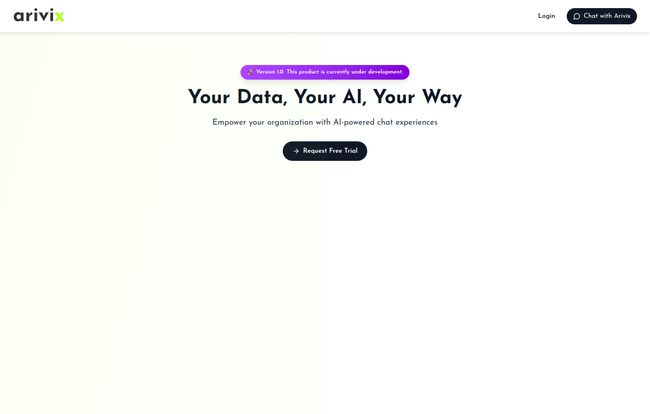
Visit Arivix
Real-Time Session Monitoring
This is gold. Pure gold. Being able to see the actual conversations users are having with your AI in real-time is an incredible source of insight. You're not just debugging the AI; you're getting a direct, unfiltered look into the minds of your customers. What are their biggest pain points? What language do they use to describe their problems? This is keyword research and user research all rolled into one. You can use these insights to improve your AI, sure, but you can also use them to inform your content strategy, your product development, and your overall marketing message.
The All-Important API Access
I’m always wary of platforms that lock you into their ecosystem. That’s why seeing “API Access for Custom Integration” is a huge relief. This is the escape hatch. It means if you have developers, they can build completely unique experiences on top of Arivix’s backend. You can integrate the AI into your mobile app, your internal Slack, your CRM—whatever you can dream up. It ensures the tool can grow with you and doesn’t become a bottleneck later on.
Let's Talk Brass Tacks: The Good, The Bad, and The TBD
No tool is perfect, especially a newer one. It’s important to go in with eyes wide open.
The Good Stuff
The core proposition—building an AI on your own data—is fantastic. It solves a real problem. The ability to connect multiple data types and the inclusion of an API for custom work are serious strengths. For an organization sitting on a mountain of proprietary information, this could be a game-changer for both internal efficiency and customer support.
The... Not-So-Good Stuff (Yet)
The site makes it clear the product is still being developed. That’s not necessarily a bad thing—it can mean you get to influence the roadmap—but it also means you might run into bugs or missing features. The other point to consider is that while the basic setup looks simple, the really powerful custom integrations will require some technical expertise. This isn't a simple plug-and-play WordPress plugin; it's a more serious tool for businesses willing to invest a bit of time.
The Big Question Mark: Pricing
Naturally, I wanted to know what this would cost. So I went looking for the pricing page, and... Oops! 404 Page Not Found.
Yep. It happens to the best of us. A classic sign of a product that's fresh out of the oven. While it's a bit of a stumble, it's also understandable. They're likely still figuring out their pricing model. Will it be per agent? A tiered monthly subscription based on usage? We don't know. For now, the only way to find out is to request the free trial or a live demo. So, if you're interested, you'll have to have a conversation with them.
The Vision: What's on the Horizon for Arivix?
I love seeing a public roadmap. It shows confidence and gives potential users a reason to stick around. Arivix lists a few intriguing things they're working on:
- Chatbot + Arivix Algo: I have no idea what the "Arivix Algo" is, but it sounds interesting. Is it a proprietary model for better reasoning? A smarter way to index data? I'm curious to see what that entails.
- Connect Your Data (AWS): This is a big one. For any company that's serious about scale, having a native AWS integration for pulling data from services like S3 is a must-have.
- Device Session Tracking: An expansion of the real-time monitoring, this would likely give more context about the user's environment (mobile vs. desktop, etc.), which is always useful for optimization.
It’s also worth noting the guy behind it, Santhosh M, is a Product Manager. In my experience, products led by PMs tend to be more focused on solving actual user problems, which is a good sign for the future.
Who is Arivix Really For?
After looking it all over, I have a pretty clear picture of the ideal Arivix user. This probably isn't for a solo blogger who just wants a simple contact form. This is for a more established organization that feels the pain of inaccessible information.
Think SaaS companies wanting to offer instant, accurate support. Or large corporations needing an internal expert system for their employees to query HR policies or technical documentation. Any business whose competitive advantage lies in its proprietary knowledge could find a lot of value here.
Frequently Asked Questions about Arivix
1. Is Arivix difficult to set up?
The basic setup process of creating a knowledge base and connecting data sources appears to be user-friendly. However, leveraging the full power of the platform through the API for custom integrations will likely require a developer or someone with technical skills.
2. What kind of data can I connect to Arivix?
Currently, Arivix supports connections to files (like PDFs, Docs), web links, and databases. They also have a native AWS integration on their public roadmap, which will expand these capabilities significantly.
3. How much does Arivix cost?
As of now, the pricing is not publicly available on their website. To get information on costs, you'll need to contact them directly to request a free trial or schedule a live demo.
4. Can I use Arivix for external customer support?
Yes, absolutely. Providing instant and accurate customer support seems to be one of the primary use cases. You can embed the chat interface on your website or app to help customers 24/7.
5. Is my company's data secure with Arivix?
The platform emphasizes security with its "Intelligent Knowledge Base," which is designed for secure storage and retrieval. The entire model is built around preventing unauthorized access to your private, internal data.
My Final Thoughts on Arivix
Arivix is an exciting and promising platform. It's clearly still in its early stages, but its foundation is solid and it’s aimed at solving a very real, very specific problem. The world doesn't need another generic AI chatbot. What it needs are smart, specialized tools that can understand the unique context of a single business. Arivix is a strong contender in that space.
If you're a business feeling the pain of siloed information and you're looking for a way to put your proprietary data to work, I'd say Arivix is definitely worth a look. The lack of public pricing is a hurdle, but the offer of a free trial or live demo is a fair trade-off. Go in, kick the tires, and see if you can build a brain for your business.
